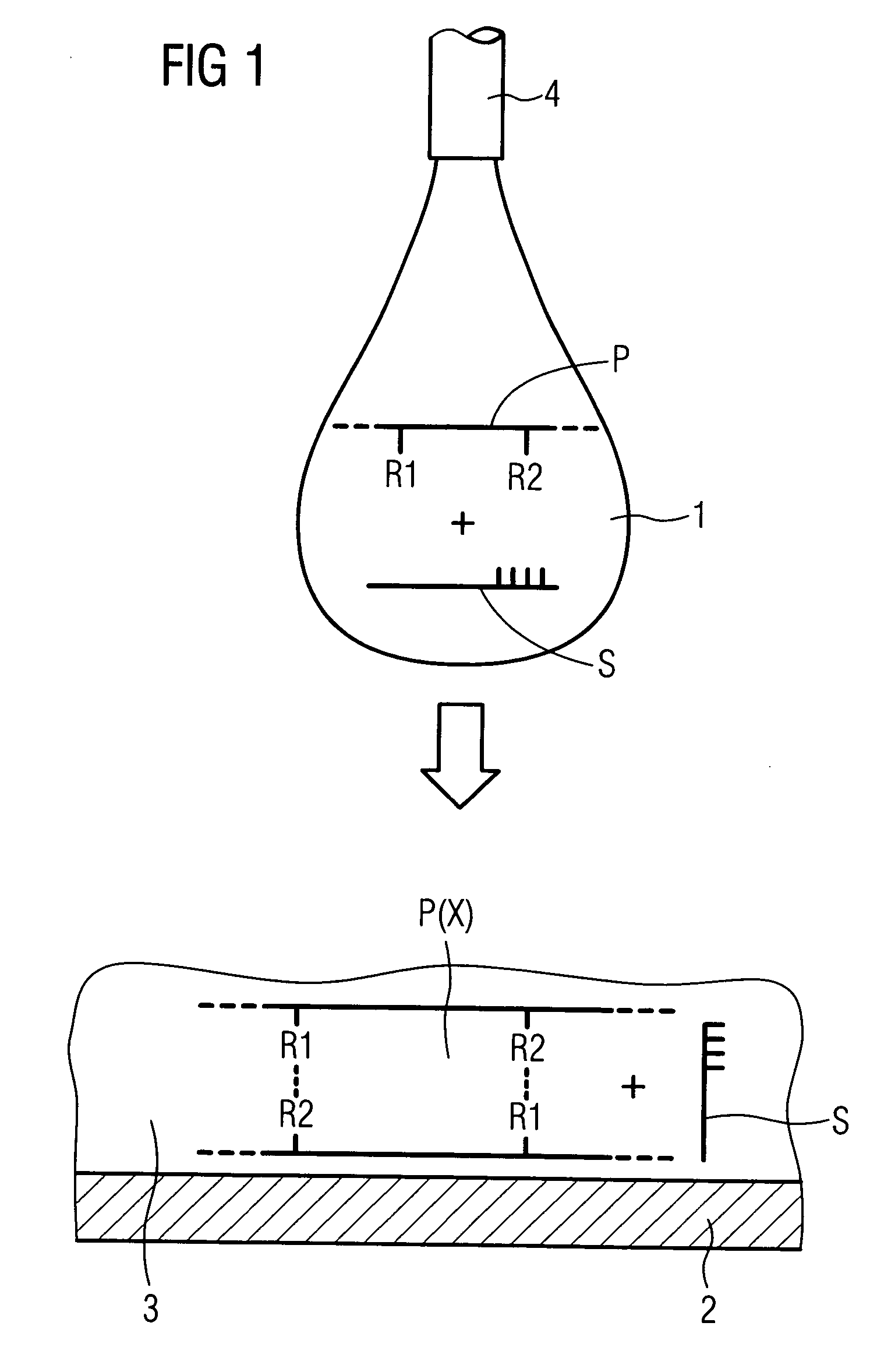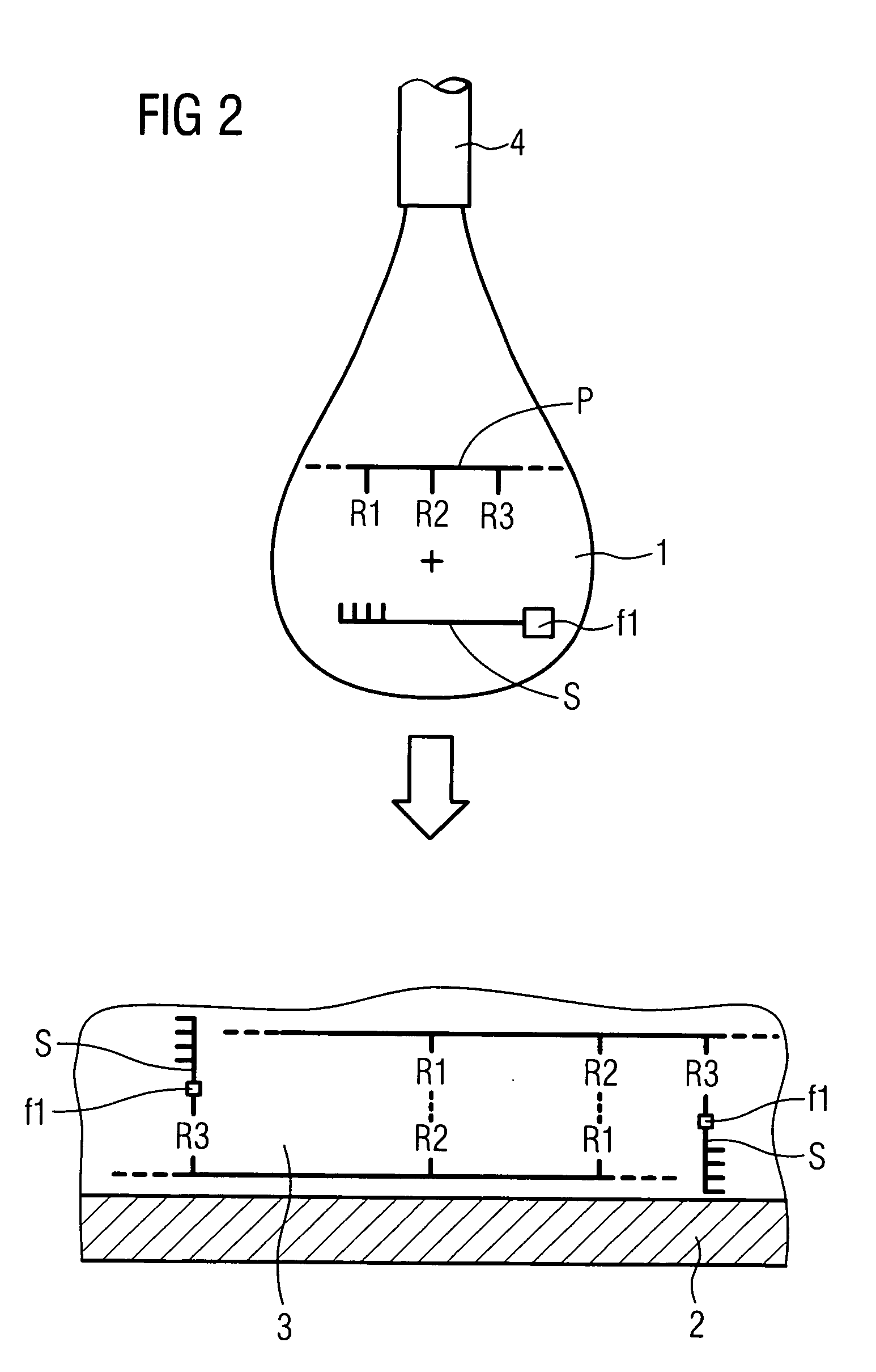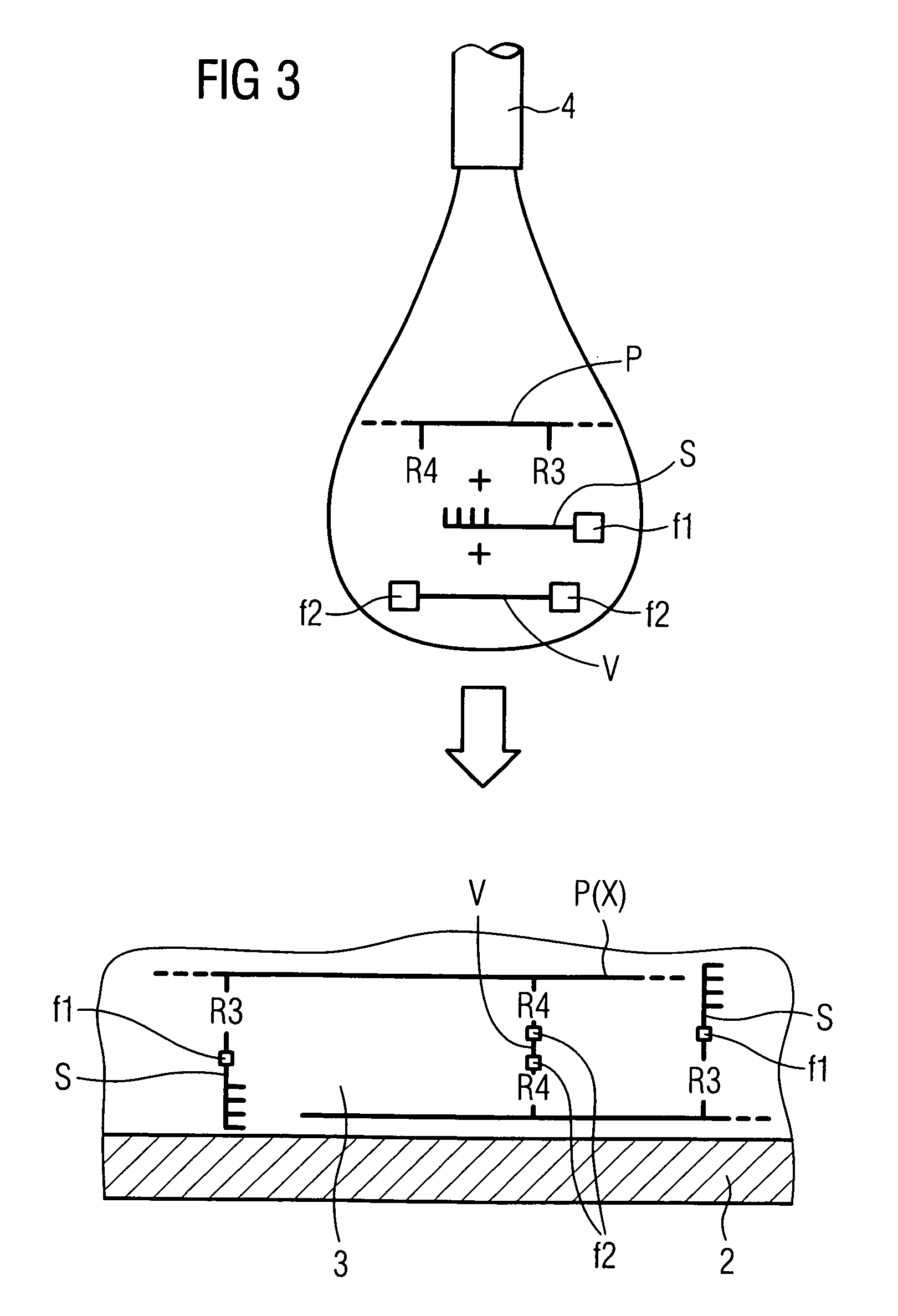[0011] It is an object of an embodiment of the invention to propose a process and a spotting solution which allow microarrays to be prepared in a simplified manner.
[0020] Another apparent
advantage is the fact that it is possible to use an embodiment of the invention for preparing in a simple manner microarrays which are variable not only with respect to the probe molecules present therein but also with respect to their polymer film. This enables the polymer matrix to be adapted to the particular probe substance, for example with respect to
coupling chemistry or to the type of immobilization of the probe molecules in the polymer matrix. In contrast, in the case of the biochips disclosed in U.S. Pat. No. 5,981,734 A, the same polymer matrix is present in all spots, i.e. the various probe molecules are always surrounded by the same polymer matrix. Moreover, the spots there are connected with one another via the polymer matrix, and this may result in contaminations and, during a measuring process or an analysis, in “chemical
crosstalk”.
[0021] In a preferred variant of the process, the polymer is solidified by non-free radical crosslinking. In this connection, it is advantageously possible to add to the spotting solution a
bifunctional crosslinker which couples, for example, to functional groups of the polymer by way of an
addition reaction and which forms bridges between various polymer strands or different regions of a polymer strand.
[0025] For an analysis carried out using a microchip, it is sufficient in principle for target molecules present in an
analyte solution contacted with a
microarray to react on the surface of a spot with probe molecules immobilized there. However, it is possible to increase the sensitivity or
reaction rate of the
biochip when using polymers which form hydrogels. Such a hydrogel is a loose
polymer network which is entered readily by an
analyte solution and target molecules present therein which find there a reaction space for the hybridization with probe molecules, which takes place in an aqueous environment. Preference is given to using copolymers of 2-
hydroxyethyl methacrylate or
glyceryl methacrylate and
glycidyl methacrylate. The ester radicals of the copolymers ensure high swellability in water and serve, at the same time, to crosslink and immobilize probe molecules.
[0026] In a further preferred variant of the process, a hydrophilic, nonvolatile filler, in particular a water-swellable polymeric filler, is intended to be added to the spotting solution, thereby diluting the latter. The result of this measure is a widening of the
polymer network and thus an enlargement of the reaction space available within a spot. This offers the possibility of making accessible a larger number of probe molecules within a spot for target molecules and thus increasing the sensitivity of a
biochip. Advantageously, the filler is removed again by washing after crosslinking of the polymer. However, this does not require any further
processing step, rather the filler may be removed in the course of an analysis, when contacting a microarray with an aqueous
analyte solution. A filler which meets the requirements mentioned particularly well is
polyvinylpyrrolidone, a substance used as thickener in other technical fields.
[0027] The
viscosity of the spotting solution, in particular when a filler of the type mentioned has been added, is most usually too high to be able to apply the solution to a support, for example with the aid of microcannulas or jets. In a further preferred variant of the process, therefore, the spotting solution is intended, prior to application to a support, to be admixed with a water-miscible
solvent which reduces the
viscosity of the solution and which evaporates rapidly at
room temperature, i.e. whose
vapor pressure is sufficiently high at
room temperature. After evaporating the
solvent at least partially, the spots have a consistency which allows both transport and relatively long storage, before the polymer is crosslinked.
 Login to View More
Login to View More 


